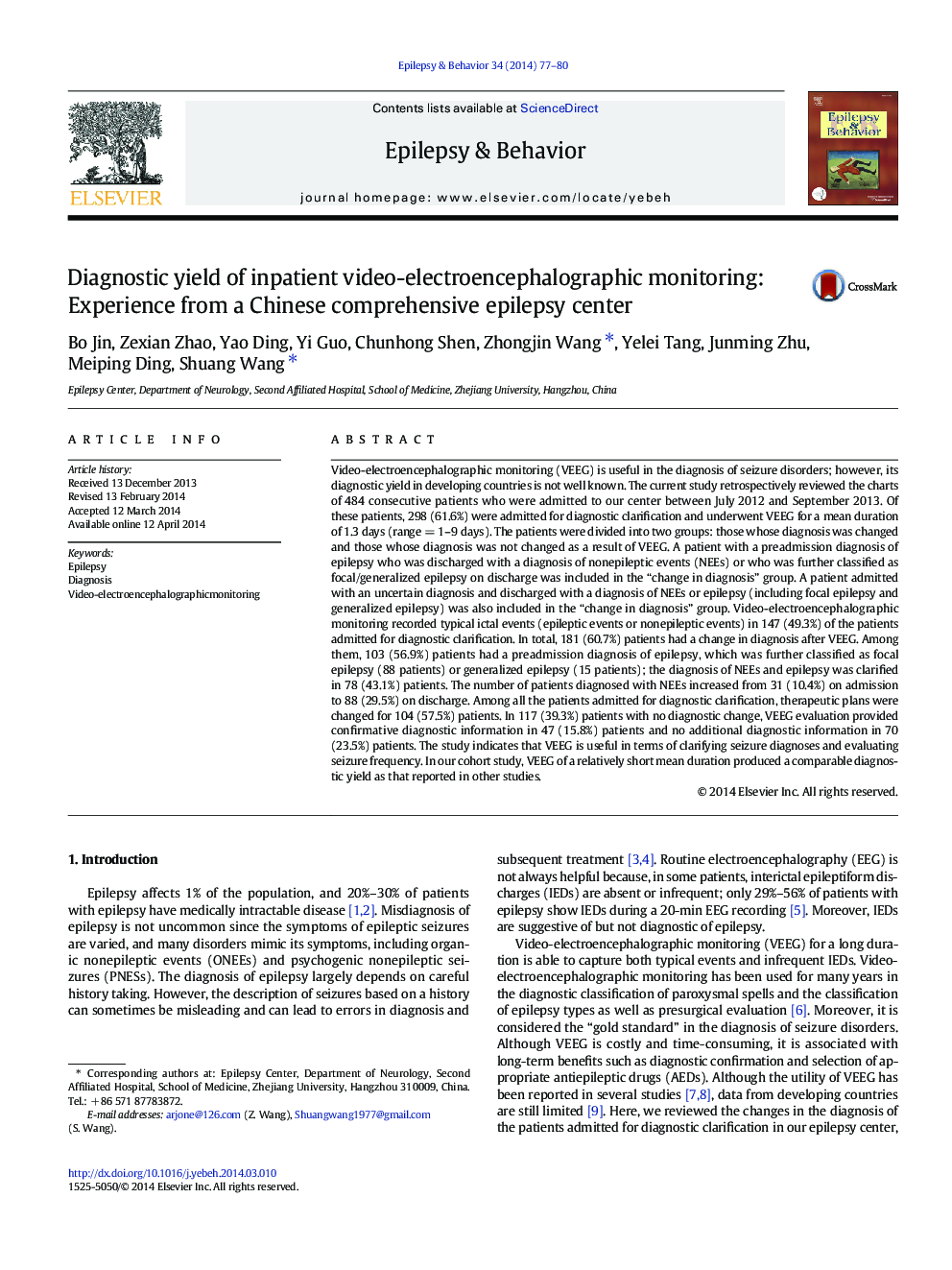| کد مقاله | کد نشریه | سال انتشار | مقاله انگلیسی | نسخه تمام متن |
|---|---|---|---|---|
| 6012344 | 1579855 | 2014 | 4 صفحه PDF | دانلود رایگان |
- VEM provides useful diagnostic information for differentiating paroxysmal spells.
- VEM provides useful diagnostic information for classifying epilepsy types.
- VEM of a relatively short duration produced an acceptable diagnostic yield.
Video-electroencephalographic monitoring (VEEG) is useful in the diagnosis of seizure disorders; however, its diagnostic yield in developing countries is not well known. The current study retrospectively reviewed the charts of 484 consecutive patients who were admitted to our center between July 2012 and September 2013. Of these patients, 298 (61.6%) were admitted for diagnostic clarification and underwent VEEG for a mean duration of 1.3 days (range = 1-9 days). The patients were divided into two groups: those whose diagnosis was changed and those whose diagnosis was not changed as a result of VEEG. A patient with a preadmission diagnosis of epilepsy who was discharged with a diagnosis of nonepileptic events (NEEs) or who was further classified as focal/generalized epilepsy on discharge was included in the “change in diagnosis” group. A patient admitted with an uncertain diagnosis and discharged with a diagnosis of NEEs or epilepsy (including focal epilepsy and generalized epilepsy) was also included in the “change in diagnosis” group. Video-electroencephalographic monitoring recorded typical ictal events (epileptic events or nonepileptic events) in 147 (49.3%) of the patients admitted for diagnostic clarification. In total, 181 (60.7%) patients had a change in diagnosis after VEEG. Among them, 103 (56.9%) patients had a preadmission diagnosis of epilepsy, which was further classified as focal epilepsy (88 patients) or generalized epilepsy (15 patients); the diagnosis of NEEs and epilepsy was clarified in 78 (43.1%) patients. The number of patients diagnosed with NEEs increased from 31 (10.4%) on admission to 88 (29.5%) on discharge. Among all the patients admitted for diagnostic clarification, therapeutic plans were changed for 104 (57.5%) patients. In 117 (39.3%) patients with no diagnostic change, VEEG evaluation provided confirmative diagnostic information in 47 (15.8%) patients and no additional diagnostic information in 70 (23.5%) patients. The study indicates that VEEG is useful in terms of clarifying seizure diagnoses and evaluating seizure frequency. In our cohort study, VEEG of a relatively short mean duration produced a comparable diagnostic yield as that reported in other studies.
Journal: Epilepsy & Behavior - Volume 34, May 2014, Pages 77-80
